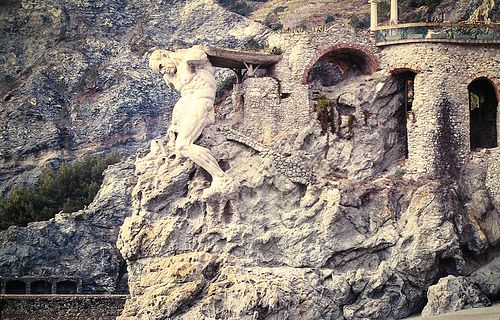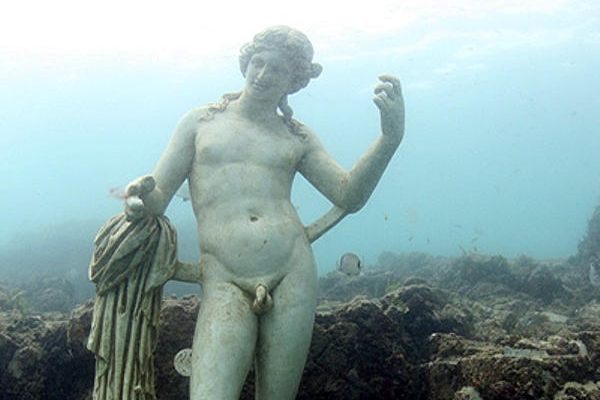About
Allied bombs and rough seas have reduced the once mighty turn of the century giant into an armless ruin. Located at the end of a popular sunbathing beach in the Italian riviera town of Monterosso del Mare, Il Gigante was originally built from concrete in 1910 to decorate the seaward edge of the elegant Villa Pastine. The 14 meter high image of Neptune holding the waves at bay quickly became a symbol of the town, and was photographed and shown on postcards of the era.
It was designed and built by Arrigo Minerbi, a well known Jewish Italian sculptor, known for works in several cathedrals and for his bronze door on the Duomo in Milan. In 1937, Minerbi was forced into hiding because of his Jewish ancestry in the middle of the Duomo project. The scenes on the doors he had designed, ironically, were inspired by the Edict of Constantine, which called religious tolerance, aimed at stopping the persecution of Christians in the Roman empire. He survived, and the doors were completed and installed after the war.
The Villa Pastine was not so lucky, and suffered from allied bombing runs. Il Gigante lost his arms, his trident, and the giant seashell he had held aloft, but remained the somewhat battered, but romantically ancient looking symbol of the town. In 1966 the statue was weakened further by rough seas, weathering it further.
In 1982 an intrepid climber discovered treasure "alle calcagna del gigante,” or “at the heels of the giant”. The golden rabbit prize from the Italian version of the famous book-treasure hunt "The Masquerade" was hidden beneath the heels of the giant.
Today the ruins almost blend into the rocky cliff face, facing the sea with decayed elegance. And no arms.
Update August 2021: It's currently under construction (with scaffolding covering it almost completely).
Related Tags
Know Before You Go
Located at the north end of the beach.
Flavors of Italy: Roman Carbonara, Florentine Steak & Venetian Cocktails
Savor local cuisine across Rome, Florence & Venice.
Book NowCommunity Contributors
Added By
Published
February 27, 2010


































